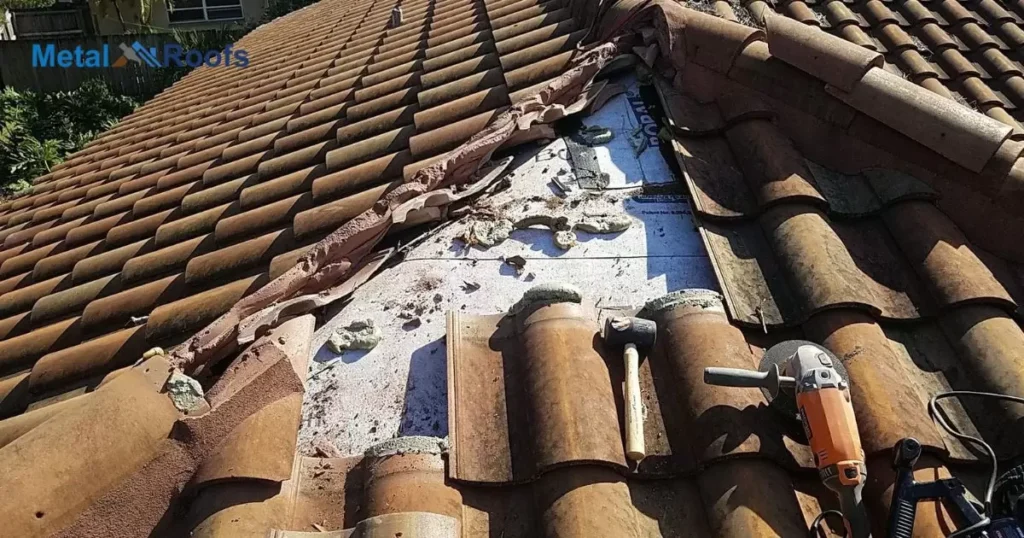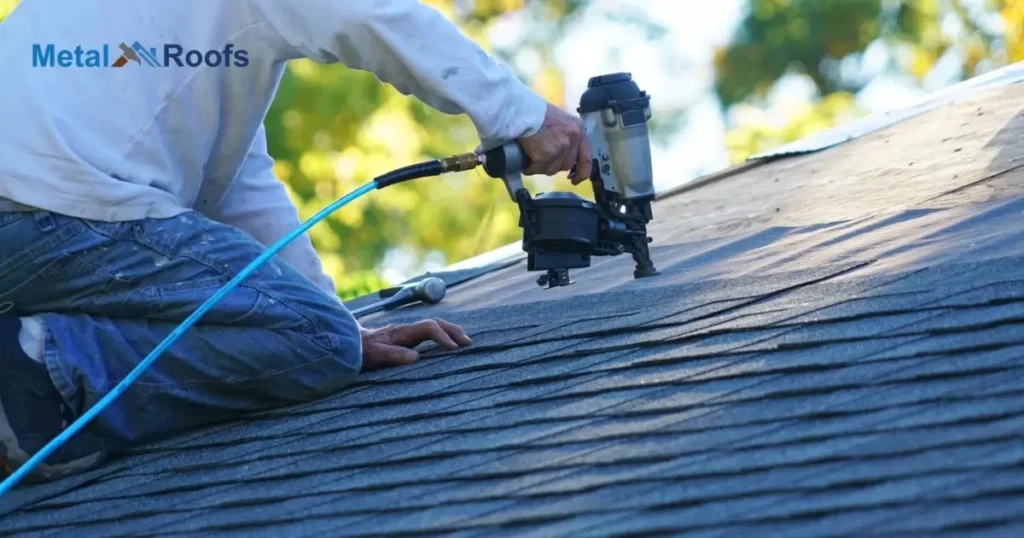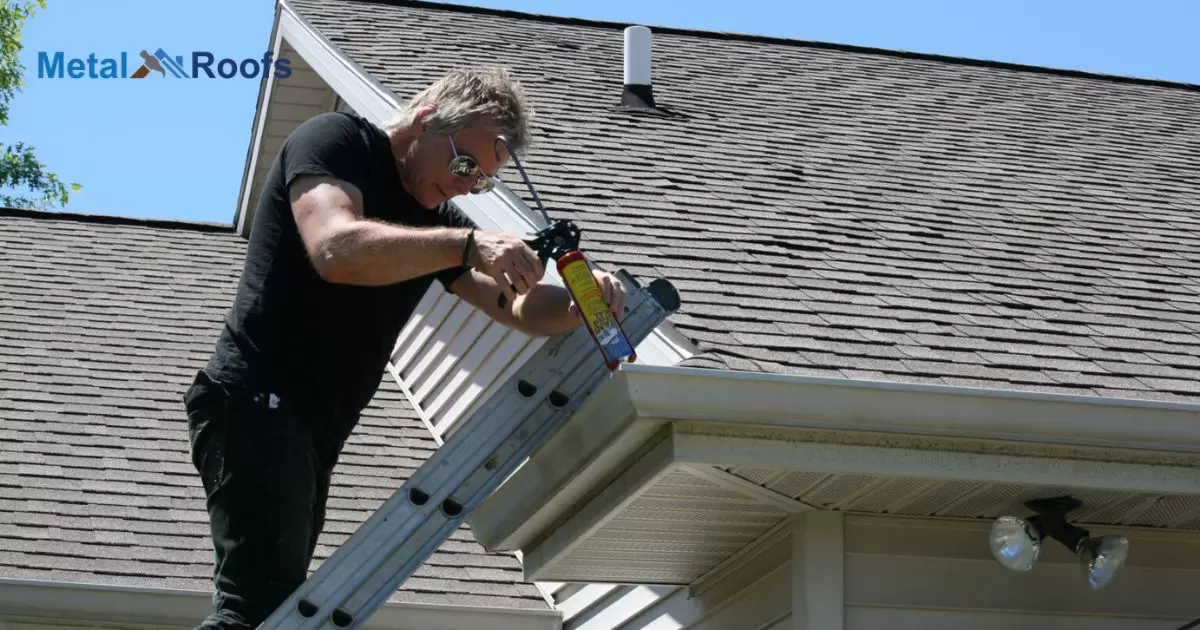A leaking metal roof requires prompt attention to avoid damage. Inspect for punctures, cracks, or loose fasteners allowing water in. Seal small holes with caulk. Repair cracked seams with sealant. Reattach loose panels.
How to fix a leaking metal roof? Catching leaks early is key to preventing water damage. Inspect for punctures, loose fasteners, and cracked seams allowing water inside. Seal small holes with caulk and reattach detached panels.
A leak in a metal roof needs prompt repair to avoid structural issues. Learn how to spot and fix common causes like punctures, detached panels, and cracked seams. Ensure the cupola on your metal roof is properly sealed to prevent water infiltration.
Key Takeaways
- Metal roof leaks often stem from damaged panels, rust, or poorly sealed seams.
- Regular inspection and maintenance are essential for identifying and addressing issues promptly.
- Proper sealing and reinforcement of seams and flashing can prevent water infiltration.
- Prompt repairs help maintain the structural integrity of the roof and prevent further damage.
- Silicone-based sealants are commonly recommended for their durability and weather resistance in fixing leaks.
Where Do Metal Roofs Usually Leak?
To fix a leaking metal roof, start by finding the leak. Look closely at seams and damaged areas. Clean the spot thoroughly. Use a suitable sealant for small holes. Replace damaged panels if needed. Reinforce seams and flashing. Check and tighten roof fasteners. Consider applying a protective coating. Regular maintenance is crucial. If unsure, seek professional help.
Seams and Joints
Metal roofs usually leak at seams and joints. These areas are prone to wear and tear. Inspect them regularly. Apply sealant to reinforce weak spots. Replace damaged sections promptly. Regular maintenance helps prevent leaks.
Roof Flashings
Metal roofs usually leak around roof flashings. Flashings are installed at intersections or protrusions. They cover gaps and prevent water seepage. Check flashings regularly for any damage. Repair or replace damaged flashings promptly. This helps maintain a watertight seal.
Roof Penetrations
Metal roofs usually leak around roof penetrations. These include vents, chimneys, and skylights. Check these areas carefully for any signs of damage. Reinforce flashing and seams around penetrations. Tighten fasteners if necessary. Regular maintenance helps prevent leaks.
Roof Edges
Metal roofs usually leak around roof edges. These edges can be prone to damage. Check for gaps or loose sections. Reinforce edges with sealant or flashing tape. Tighten any loose fasteners. Regularly inspect and maintain roof edges.
Five Common Causes of Metal Roof Leaks

Metal roof leaks often stem from common issues. One, damaged panels invite leaks. Two, rust weakens metal, causing leaks. Three, poorly sealed seams let water seep in. Four, loose fasteners allow water penetration. Five, improper flashing leads to leaks. These causes underline the importance of regular roof maintenance.
1. Metal Roofing Screws
Metal roofing screws are essential components. They hold metal panels in place securely. Using the right screws ensures proper installation. Quality screws prevent leaks and maintain roof integrity. Understanding the importance of metal roofing screws is crucial for a durable roof.
2. Stack Flashings
Metal roofing screws play a vital role in securing roof panels. Stack flashings, essential components, seal joints where roof meets walls or other protrusions. Properly installed stack flashings prevent water infiltration. They’re crucial for maintaining the integrity of the roof. Regular inspection ensures they remain intact.
3. Missing Sealants
Missing sealants around metal roofing screws can cause leaks. Water can seep through the screw holes, damaging the roof. Regularly inspect and replace missing sealants to maintain a watertight roof.
4. Curb Flashings
Curb flashings play a crucial role in preventing leaks. They direct water away from vulnerable areas. Improperly installed curb flashings can lead to leaks. Ensure they are securely attached and sealed. Regular inspection helps catch potential issues early.
5. Seams and Overlaps
Seams and overlaps present a common issue. These areas often lack proper sealing. Without adequate protection, water easily penetrates. Regular inspection and maintenance can prevent this problem.
Metal Roof Leaking At Overlap

A metal roof leaking at the overlap is a common problem often caused by inadequate sealing. Water easily infiltrates through any gaps present in the overlapping sections. Ensuring thorough and proper sealing of these overlaps is essential to prevent leaks and water damage.
Regular inspection and maintenance can help detect any issues early on and prevent further damage to the roof and the underlying structure. Addressing these concerns promptly can prolong the lifespan of the metal roof and maintain its integrity.
Low Pitch Metal Roof Leaking
A low pitch metal roof is prone to leaking due to its design. With less slope, water doesn’t drain as effectively. This pooling of water increases the risk of leaks over time.
Regular inspections and maintenance are crucial to catch and address any potential issues early on. Additionally, installing additional waterproofing measures can help enhance the roof’s resilience against leaks and water damage.
Metal Roof Leak Repair Cost
| Repair Type | Cost Range |
| Small Repairs | $300 – $1,000 |
| Extensive Repairs | Exceeding $2,000 |
Repairing a metal roof can vary in cost. Small repairs typically range from $300 to $1,000. Extensive repairs may exceed $2,000. Factors influencing cost include materials, labor, and extent of damage. It’s wise to get multiple quotes before proceeding.
Metal Roof Leaks In Heavy Rain
Heavy rain can exacerbate metal roof leaks. When the downpour is intense, vulnerabilities become more pronounced. Damaged areas are particularly susceptible to leakage during these conditions.
It’s essential to conduct thorough inspections and address any issues promptly to prevent extensive water damage. Regular maintenance is key to ensuring the roof’s integrity during heavy rainfall, safeguarding the building’s interior from potential harm.
Lasting Solutions for Metal Roof Leaks

To secure lasting solutions for metal roof leaks, start with a meticulous inspection. Locate any damaged areas such as corroded panels or compromised seams. Swiftly apply durable sealants to reinforce vulnerable points like seams and flashing.
Consistent upkeep through regular maintenance checks plays a vital role in averting future leaks. In instances of significant damage or intricate repairs, seeking professional expertise ensures thorough restoration and long-term protection for your metal roof.
Frequently Asked Questions
How do you stop a metal roof from leaking water?
Regularly inspect and seal any damaged areas to prevent water infiltration on a metal roof.
Why does my metal roof leak in heavy rain?
Your metal roof may leak in heavy rain due to damaged panels or seams, or poor installation and maintenance.
What is the best sealant for metal roofs?
Silicone-based sealants are often considered the best for metal roofs due to their durability and weather resistance.
Conclusion
In conclusion, addressing leaks in metal roofs requires identifying common issues such as damaged panels, poorly sealed seams, and rust. Regular maintenance and prompt repairs are essential to prevent water infiltration during heavy rainstorms.
By implementing proper maintenance strategies and addressing issues promptly, homeowners can ensure the longevity and effectiveness of their metal roofs, protecting their properties from water damage and maintaining structural integrity for years to come.











